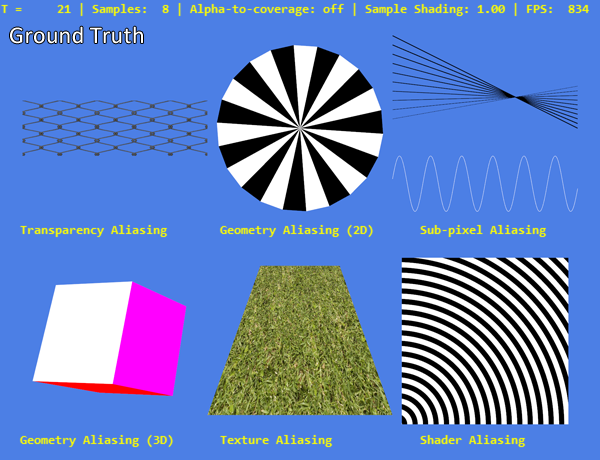Sampling AA Comparison
Figure 8 shows a comparison of all the sampling-based AA methods we have discussed, each with a variety of sample counts. The "ground truth" image represents what is closest to the "real", ideal representation of the scene. It was produced by combining 8xSGSSAA with 4×4 OGSSAA.
Features of note include the equivalent quality of SGMSAA and SGSSAA with the same sample count for geometry aliasing, and the lack of transparency, texture and shader anti-aliasing in the MSAA case. The drawbacks of ordered sampling patterns, particularly for near-vertical and near-horizontal lines, are immediately visible when comparing 4x SGSSAA to 2×2 OGSSAA. When there are only 2 samples per pixel, OGSSAA is limited to either purely horizontal (2×1) or purely vertical (1×2) AA, while a sparse pattern can cover both types of edges to some extent.
The AA methods with sample aggregation filters that differ from the normal box filter offer better aliasing reduction per sample, but suffer from a blur effect on the whole image.
One final important point to note - particularly with a view to the upcoming discussion of analytical AA methods – is the fact that all these sampling-based methods apply equally well to sub-pixel aliasing as they do to normal geometry aliasing.

Ground truth | No AA | 2x MSAA | 2x SGSSAA | 4x MSAA | 4x SGSSAA | 8x MSAA | 8x SGSSAA | 8x MSAA + alpha-to-coverage | 2x1 OGSSAA | 1x2 OGSSAA | 2x2 OGSSAA | 4x Narrow Tent | 6x Narrow Tent | 6x Wide Tent | 8x Wide Tent
